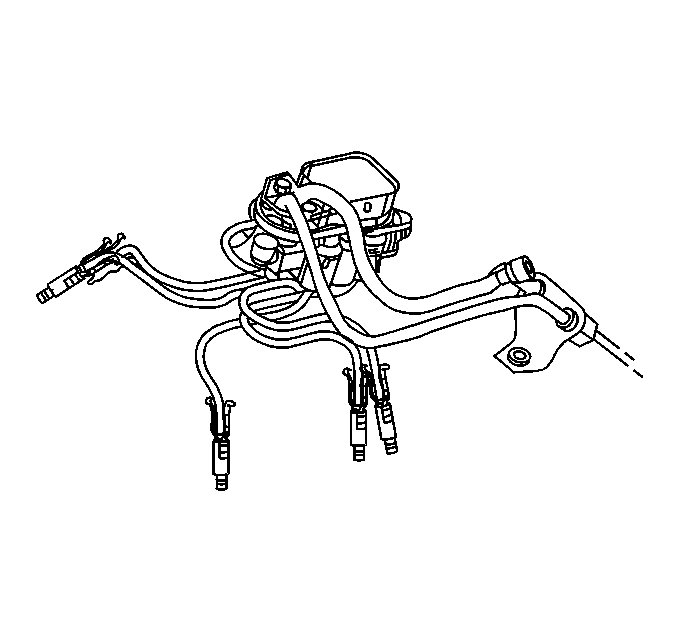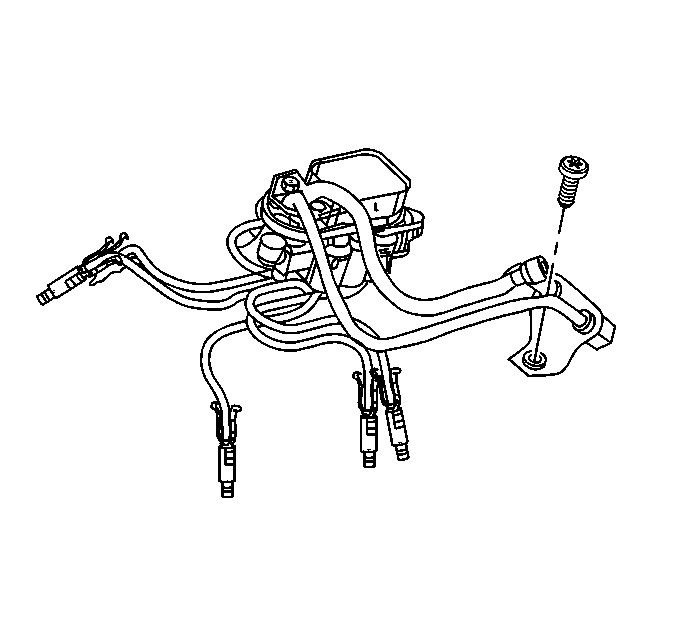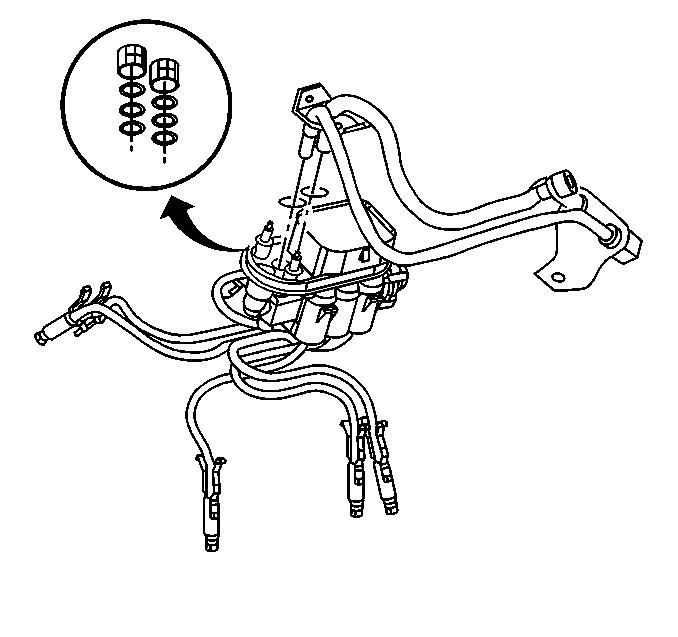Fuel Hose and Pipes Assembly Replacement
Description
Fuel Lines - These are welded steel tubes, meeting the GM Specifications 124-M, or its equivalent. The fuel feed line is 3/8 inch diameter and the fuel return line is 5/16 inch diameter. Do not use copper or aluminum tubing in order to replace the steel tubing. Those materials do not have satisfactory durability in order to withstand normal vehicle vibration.
Coupled hose - These are not to be repaired. Replace the coupled hoses only as an assembly.
Uncoupled hose - Use only reinforced furl resistant hose, made of Fluoroelastomer material. Do not use a hose within 4 inches (100 mm) of any part of the exhaust system, or within 10 inches (254 mm) of the catalytic converter. The hose's inside the diameter must match the outside diameter of the steel tubing.
Clamps - These are stainless steel, screw banktype clamps, PN 2494772, or the equivalent.
Fuel Line Repair
- Cut a piece of fuel hose 4 inches (100 mm) longer than the section of line to be removed. If you are removing more than 6 inches (152 mm), use a combination of steel pipe and hose. The hose length should not be more than 10 inches total.
- Cut a section of the pipe to be replaced with a tube cutter. Use the first step of a double flaring tool in order to form a bead on the ends of the pipe and also on the new section of pipe, if used.
- Slide the hose clamps onto the pipe and push the hose 2 inches (51 mm) onto each portion of the fuel pipe.
- Tighten a clamp on each side of the repair.
- Secure fuel line to the frame.
- Check for leaks.
Fuel Hose and Pipes Engine Fuel Pipes
Removal Procedure
- Disconnect the negative battery cable. Refer to
Caution: Unless directed otherwise, the ignition and start switch must be in the OFF or LOCK position, and all electrical loads must be OFF before servicing any electrical component. Disconnect the negative battery cable to prevent an electrical spark should a tool or equipment come in contact with an exposed electrical terminal. Failure to follow these precautions may result in personal injury and/or damage to the vehicle or its components.
in General Information. - Relieve the fuel system pressure. Refer to Fuel Pressure Relief Procedure .
- Disconnect the fuel hoses at the rear of intake manifold.
- Remove the injector fuel inlet and outlet pipe retainer nuts.
- Remove the injector fuel inlet and the outlet pipe retainer.
- Remove the rear fuel pipe bracket retaining bolt.
- Pull straight up on the fuel pipe in order to remove the fuel pipes from the injector assembly.
- Remove the O-ring seals from both ends of the fuel feed and return pipes.
- Discard the O-ring seals.




Installation Procedure
- Use the seal retainer tool in order to assemble the new O-rings into the inlet and outlet of the fuel injector assembly.
- Apply a few drops of clean engine oil to the male tube ends.
- Install the fuel feed and return pipes to the fuel assembly.
- Install the fuel pipe retainer and the attaching nuts.
- Install the rear fuel pipe bracket retaining bolt.
- Tighten the rear fuel line bracket bolt to 6.0 N·m (53 lb in).
- Tighten the fuel pipe retainer nuts to 3.0 N·m (27 lb in).
- Install the new O-ring seals on the engine fuel feed and the return pipes.
- Install the fuel feed and return lines to the engine fuel pipes.
- Inspect for fuel leak through the following steps:
- Tighten the fuel filler cap.
- Connect the negative battery cable

Caution: Always apply a few drops of clean engine oil to the male pipe ends before connecting the fuel pipe fittings in order to reduce the risk of fire and personal injury. This will ensure proper reconnection and prevent a possible fuel leak. During normal operation, the O-rings located in the female connector will swell and may prevent proper reconnection if not lubricated.

Once installed, pull on both ends of each connection in order to make sure they are secure.
Tighten
Notice: Use the correct fastener in the correct location. Replacement fasteners must be the correct part number for that application. Fasteners requiring replacement or fasteners requiring the use of thread locking compound or sealant are identified in the service procedure. Do not use paints, lubricants, or corrosion inhibitors on fasteners or fastener joint surfaces unless specified. These coatings affect fastener torque and joint clamping force and may damage the fastener. Use the correct tightening sequence and specifications when installing fasteners in order to avoid damage to parts and systems.

Tighten
Tighten the fuel pipe nuts to 30.0 N·m (22 lb ft).
| 8.1. | Temporarily connect the negative battery cable. |
| 8.2. | Turn ON the ignition switch for 2 seconds. |
| 8.3. | Turn the ignition switch to the OFF position for 10 seconds. |
| 8.4. | Again, turn the ignition switch to the ON position. |
| 8.5. | Check for fuel leaks. |
| 8.6. | Disconnect the negative battery cable. |
